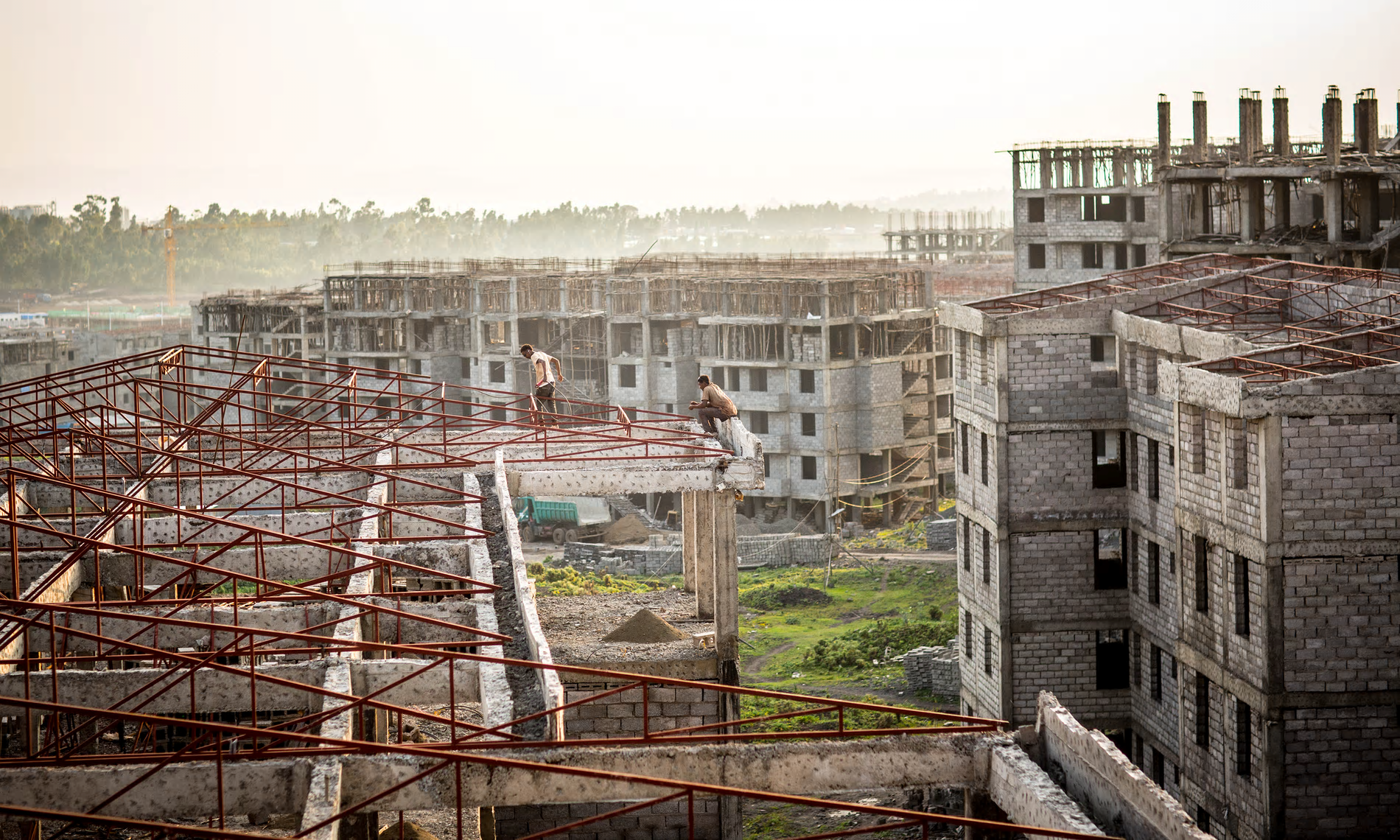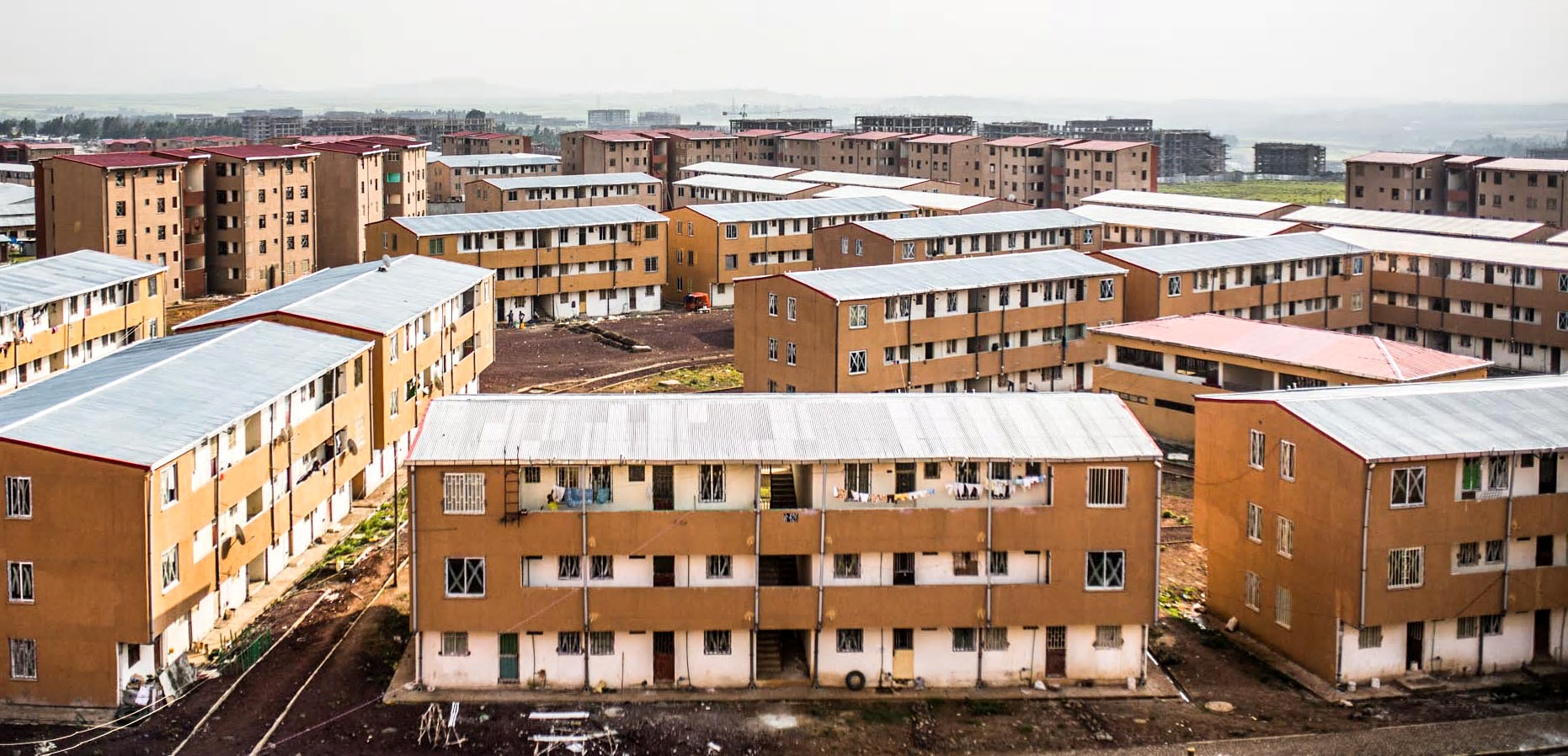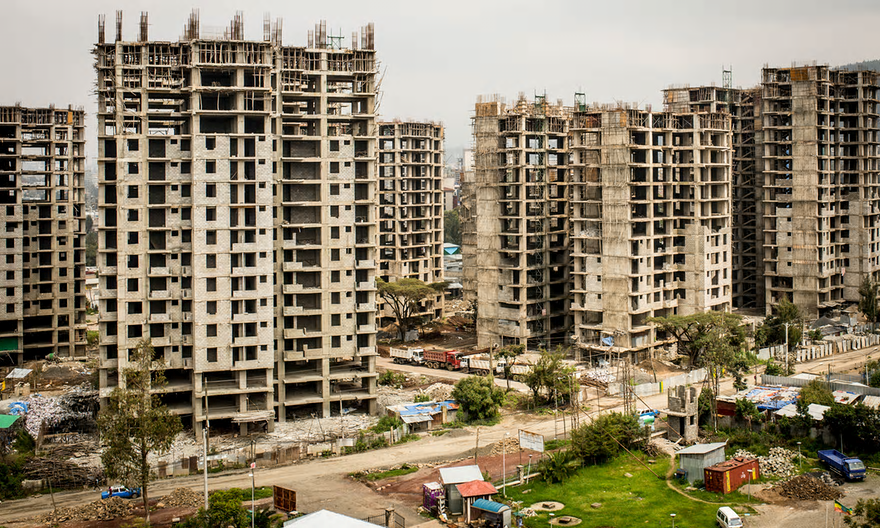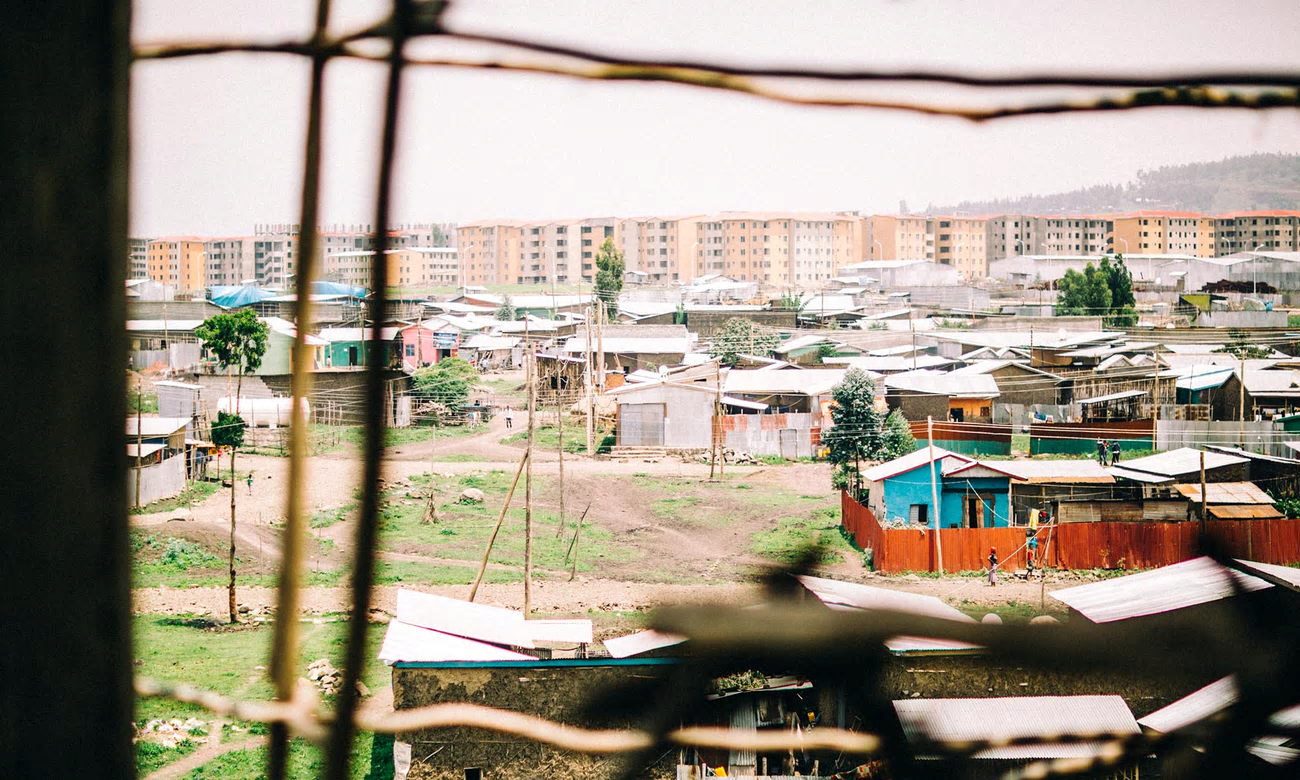PBS: Escaping Eritrea … [Read More...] about ካብ ውሽጢ ቤት ማእሰርታት ኤርትራ
‘Addis has run out of space’: Ethiopia’s radical redesign
Tom Gardner in Addis Ababa. Photographs by Charlie Rosser | Monday 4 December 2017 | THE GUARDIAN
As Addis Ababa creaks under the weight of a mushrooming populace, sub-Saharan Africa’s largest housing project is under way. But who benefits?
 Wrapped in a white shawl and sporting a wide-brimmed cowboy hat, Haile stares out at his cattle as they graze in a rocky patch of grass. “My family and I have been here since I was a child,” he says, nodding at the small, rickety houses to his right. “But we will have to leave soon.” In the distance loom hulking grey towers, casting long shadows over his pasture. This is Koye Feche, a vast construction site on the edge of Addis Ababa that may soon be sub-Saharan Africa’s largest housing project.
Wrapped in a white shawl and sporting a wide-brimmed cowboy hat, Haile stares out at his cattle as they graze in a rocky patch of grass. “My family and I have been here since I was a child,” he says, nodding at the small, rickety houses to his right. “But we will have to leave soon.” In the distance loom hulking grey towers, casting long shadows over his pasture. This is Koye Feche, a vast construction site on the edge of Addis Ababa that may soon be sub-Saharan Africa’s largest housing project.
Koye is the latest in a handful of miniature cities that are gobbling up land all around the Ethiopian capital. Since launching the integrated housing and development plan (IHDP) in 2006, the Ethiopian government has built condominium estates like these at a pace unrivalled anywhere in Africa. To date, more more than 250,000 subsidised flats have been transferred to their new owner-occupiers in Addis Ababa and smaller towns. Situated 25km south-east of the city centre and covering over 700 hectares of land, Koye will house more than 200,000 people in row upon row of muscular concrete high-rises.
“The condominiums are socially and economically segregated”
Alazar Ejigu, architect

Modelled on the modernist housing estates found across the postwar west, in particular east Germany, Addis Ababa’s condominiums symbolise the vaulting ambition of the Ethiopian government in its efforts to manage the country’s relentless urban growth. But whether they will ever solve its housing problems is uncertain. The population of the capital alone is expected to double to more than 8 million over the next decade. The number of houses needed to meet supply is estimated to be as many as half a million, but nearly a million people languish on the waiting list for a condominium. Nationwide, the urbanisation rate is estimated to be somewhere from 4-6% per year.
As more and more of Ethiopia’s 100 million inhabitants – 80% of whom still live in the countryside – spill into Addis Ababa, strains on the city’s land have intensified. The consequences may be explosive. “Addis Ababa has run out space,” says Felix Heisel, an urban expert at Karlsruhe Institute of Technology in Germany. Though the state theoretically owns all land, seizing it from farmers like Haile can cause problems. The “masterplan” – shelved last year – to develop farmland belonging to Oromia, the region that surrounds the capital, was the catalyst for widespread anti-government protests that led to the declaration of a nine-month state of emergency. Expanding the city is for now out of the question.
Financed entirely by public resources and without the support of foreign donors, the condominium programme has, however, won its fair share of plaudits. “It represents a commitment to social housing that is rarely seen in Africa,” says Patrick Lamson-Hall of New York University. “It shows other African nations that Africa can solve its own problems,” agrees Alazar Ejigu, an Ethiopian architect and urban planner based in Sweden.
All construction is carried out by local firms, which means employment for young men like Nibrat, who lays cement on the Koye estate. “I won’t be able to live here myself as I won’t be able to afford the rent,” he says. “But I like this job and prefer it to farming.” The IHDP is thought to have created semi-skilled jobs for nearly 200,000 men and women since 2006.

But it also has plenty of critics, including the World Bank, which considers it fiscally unsustainable. Those who can afford the deposit – and manage to win the lottery that allocates apartments – often struggle to pay off the mortgage. More than half, according to Simon Franklin of the London School of Economics, choose to rent the property out and move to places where it is easier to travel to work and find employment, or where social ties are stronger.
The government was “too modern, too radical in its approach”, says Ejigu. “The building design fails to sustain people’s ordinary, traditional way of life.” He and others fear that these European-style constructions breed loneliness and segregation. “In the informal settlements the rich and poor live side by side,” he adds. “But the condominiums are socially and economically segregated. The poorest cannot afford to live in them.”
The spectre of the many failed, empty high-rises littering the peripheries of cities elsewhere in Africa hangs over Ethiopia’s condominiums – although, as Franklin notes, there is little sign of the same happening here. New estates quickly become bustling, lively neighbourhoods even while they are still half-finished building sites. “Winning an apartment is an enormous asset,” Franklin says. “In spite of the common view that no one would want to live in them, their price keeps going up and up.” His research has found that this demand is driven disproportionately by a young, urban professional class.

In Bole Dimtu, a few kilometres east of Koye, thousands of such residents have recently moved in. They include middle-class professionals like Tesfaye, a government employee. He and his family of six used to live in rental housing in the heart of the capital. “I won the lottery,” he beams, cradling his youngest child. “It’s so much better here. I own this house – finally I’m not renting.” But there are problems in Bole Dimtu, too. Water has not been running for months and mountains of rubbish pile up in public areas designed to be parks. Merchants sell water cartons from horse-drawn carts. “I need water, I need water,” shouts one woman as they rattle by.
There is another flipside that worries even the IHDP’s staunchest supporters. Since its inception, the scheme has developed in tandem with a slum clearance programme in Addis Ababa’s inner city. In the past year the pace of demolition has quickened, with 360 hectares and more than 3,000 homes slated to be cleared over the next three years. A revived city centre and business district comprising high-rises of at least nine storeys will replace the old neighbourhoods. It is an “extraordinary high-modernist project” says Franklin.
The centre is slowly being cleansed of its poorer residents, freeing up high-value land for the government to lease to private developers. “The slum clearance and the condominiums are closely linked,” Franklin explains. “There seems to be a concerted effort to use the condominiums to suck people out of the centre.” All evicted tenants are offered a condominium apartment, but many cannot afford it. The alternative for homeowners – financial compensation and a new plot of land – is often paltry, and usually many miles from their original neighbourhoods.
So it is for Tirualem, who has lived with her family of six in a neighbourhood called Piassa for 30 years but was recently told to move so that, she thinks, a nearby hotel can build a swimming pool. She has been promised an apartment in a new condominium estate, 20km away. “We don’t have the money for a condominium. And there’s no work there. We are moving only because we are forced to.”

As Ethiopia’s capital creaks under the weight of its rising population, some are starting to plan for a future outside of Addis Ababa. For the first time, the government’s five-year development plan has a clear urban focus, with efforts being made to promote secondary towns like Hawassa, Bahir Dar and Mekele, in part by linking them to an ambitious network of industrial parks under construction. At the same time it has begun building 1.7m new rural homes across the country.
Other schemes are also taking shape. Tsedeke Woldu, an Ethiopian millionaire and construction developer, has drawn up a plan to build 8,000 new towns across the country in partnership with local governments, hoping to stem the tide of urban migration by bringing infrastructure and jobs to rural areas. “Without efforts like this you can see Addis Ababa eventually being suffocated,” says Zegeye Cherenet, an architect and urban planner. Woldu intends to start work on 13 pilot towns early next year.
Will this be enough? Ethiopia has shown that in the face of seemingly insurmountable urban pressures it is possible for even a very poor country to take radical steps. But it also demonstrates their limits: the government’s top-down, authoritarian approach often threatens to be its own undoing. Ethiopia’s government can steamroller grand plans through like few others. But the question is always the same: at what cost?
